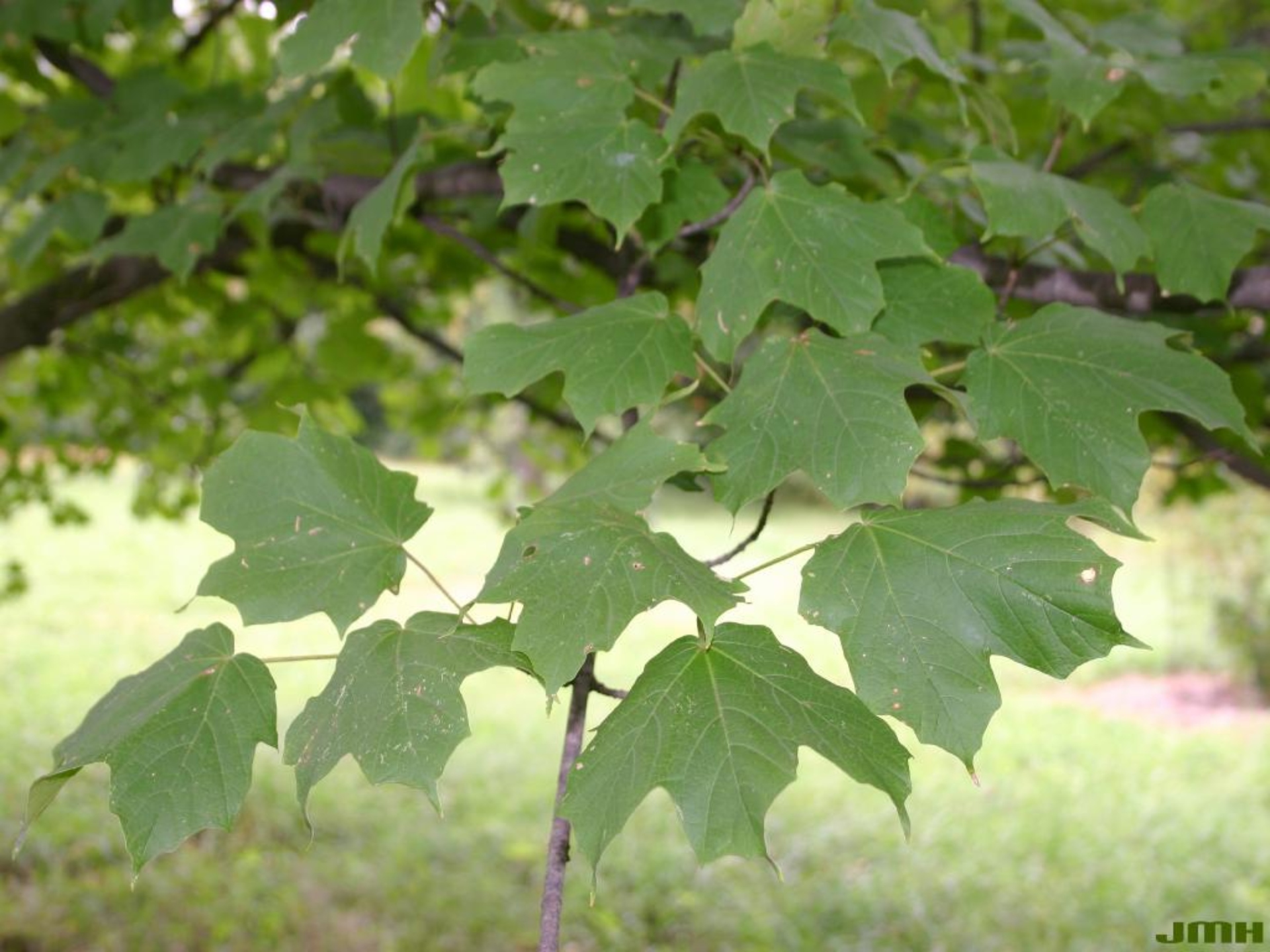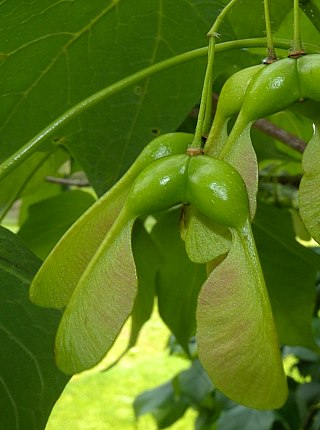Black Maple
Acer nigrum Michx. f.
Description
Black maple is a member of the soapberry family (Sapindaceae) and is closely related to sugar maple (Acer saccharum). It is considered by some to be a subspecies (Acer saccharum subsp. nigrum) of sugar maple 5,8,11 . The two species can be confused for one another because they often form hybrids. Black maple has opposite leaves that are three lobed and usually have a drooping appearance ³. Black maple tree has dark and deeply grooved tree bark ³. It grows to 70 to 110 feet tall at maturity4 and has a straight and central trunk when found living in the forest. Its branches spread wide when they are out in the open. Black maple has a mixture of yellow to orange-red fall foliage 8 . It typically blooms anywhere between April and May. Male and female flowers are separate and may be on the same or different trees 5 . Flowers are typically yellow and green. The fruits are typically green and brown. They have two winged horseshoe shaped fruits (samaras) that are roughly 1 inch in length that typically appear in clusters 5 . In order for the tree to grow, it needs to be in an area that is partly shaded but also gets a sufficient amount of light¹.
Leaf of black maple. J. Hagstrom, Courtesy of the Morton Arboretum 10

Samaras of two fruits of black maple. @ J. Hilty, Illinois Wildflowers 5
Distribution
The black maple is native to North America. A large number of black maples can be found in the Midwestern United states, a section of the Eastern United States, and in Southern Ontario, Canada¹. You can find many black maple trees in Maryland, Tennessee, Kentucky, Missouri, Wisconsin, Kansas, Illinois, Iowa, New York, New Jersey, Connecticut, Indiana, Massachusetts, Michigan, New Hampshire, Ohio, Pennsylvania, Vermont, Virginia, and West Virginia. Black maples are typically found in bottomlands and in wooded areas 4 . In Maryland it is recorded in Garrett, Washington and Harford counties ².

Natural distribution of black maple. E.L. Little, Jr., USGS 12
Wildlife Importance
Many upland game birds and many songbirds eat the buds, the seeds, and the sap of black maple trees5 . The seeds and the sap are consumed by a number of birds and other wildlife as a means of survival. Animals commonly browse black maple trees and feed on the buds, seeds, and leaves. Songbirds, smaller mammals, and other common small animals that tend to live in the cavities of trees can also be found living inside of black maple trees7 .
Economic Importance
Black maple trees are commonly used in the production of maple syrup. The tree is tapped for its sap during the spring and tappers turn use the sap to make maple syrup ³. The wood of a black maple tree is often sold as hard maple lumber4 and is often used in the making of flooring, furniture, instruments, baseball bats, and paper7 .
Threats
Oftentimes, the American beaver and North American porcupine among many other species, eat the wood and bark of the black maple tree. The twigs, branches and leaves of black maple trees are often eaten by elk, the American moose, and the white tailed deer 5 . Black maple trees can also be affected by high salt concentration in the tree’s surrounding area, drought and air pollution 6 .
Interesting Facts
- Black maple trees live up to about two hundred years old. The tree grows very quickly in its earlier years of life then begins to slow down as it gets older4 .
- The name black maple comes from Latin Acer meaning maple and nigrum meaning black 8 .
- About forty gallons of sap is needed to produce one gallon of syrup9 .
References
- Lady Bird Johnson Wildflower Center: Acer nigrum
- Maryland Biodiversity Project: Black Maple
- Minnesota Department of Natural Resources: Black maple
- USDA Forest Service, Silvics, Vol. 2, Hardwoods: Acer nigrum
- Illinois Wildflowers: Black maple
- Purdue University, Inter to Trees of Indiana: Black Maple
- Ariel-Foundation Park: Black Maple
- North Carolina State Extension: Acer saccharum subsp. nigrum
- PPM Landscape Contractors: 9 Interesting Facts About Maples
- Morton Arboretum: Black maple
- The Morton Arboretum: Black Maple
- Wikipedia: Acer nigrum
Contributed by J. Abdullah
